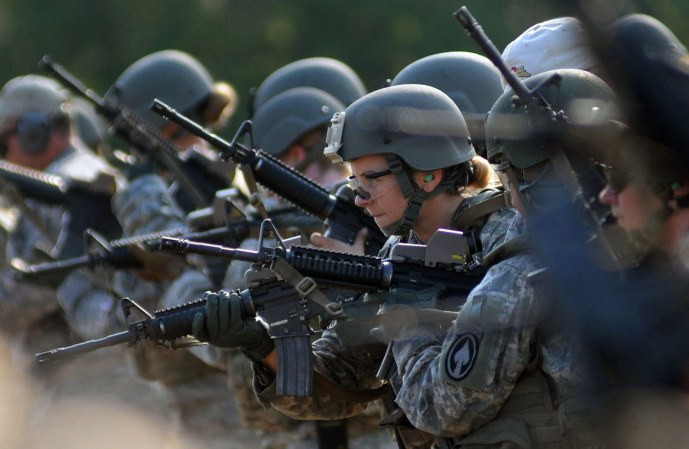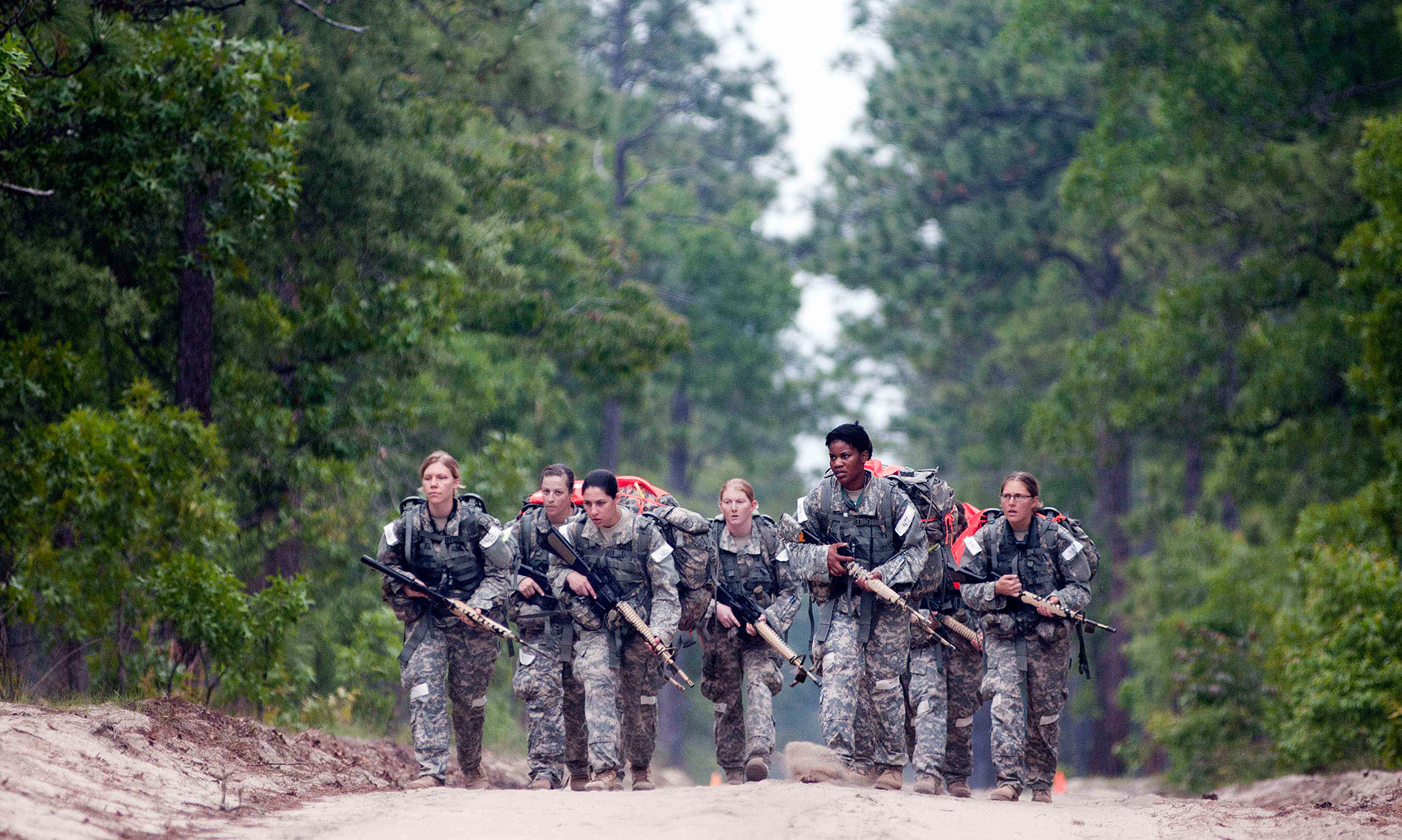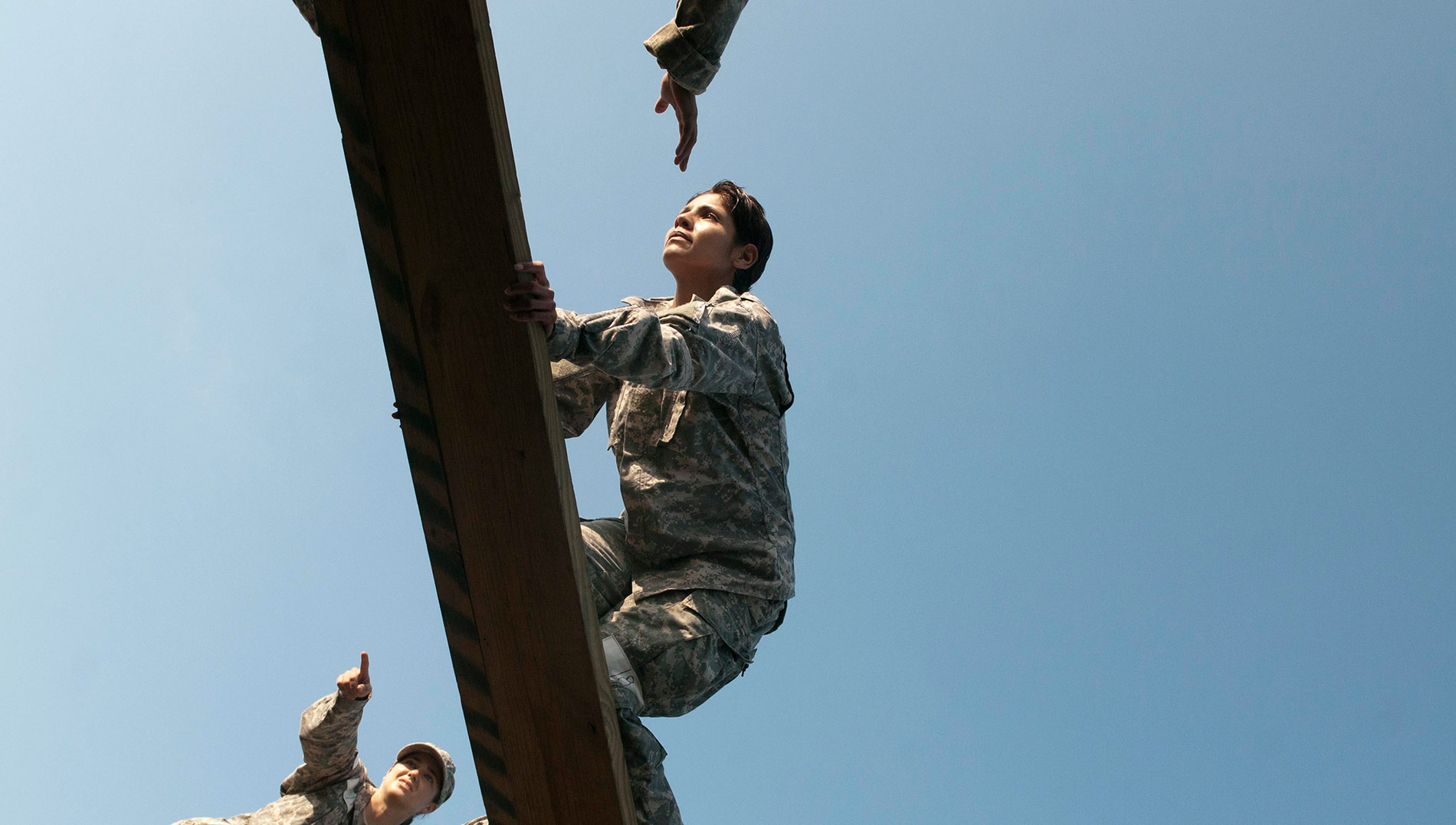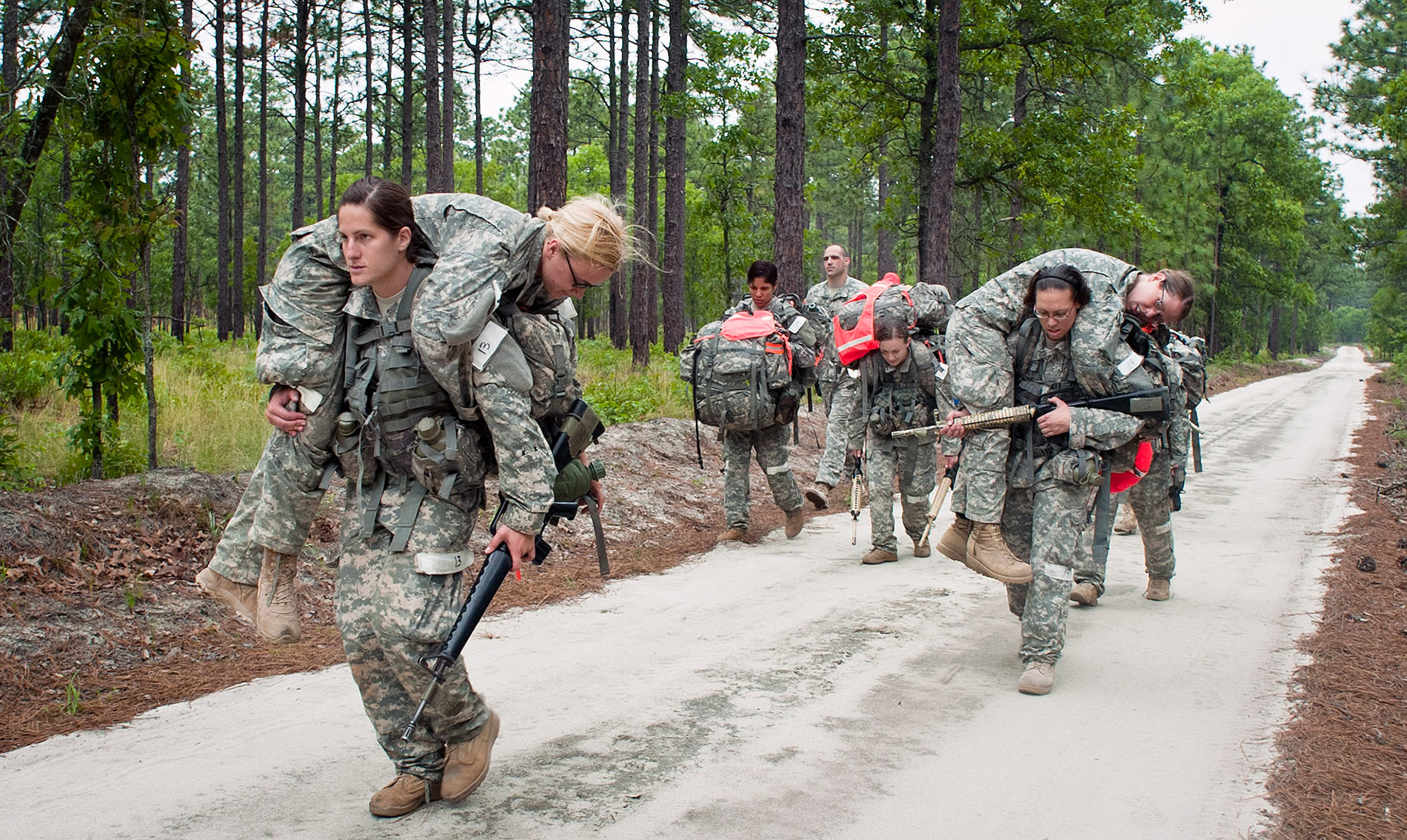
In 2010 the U.S. Army Special Operations Command created a pilot program to put women on the battlefield in Afghanistan. In this edited excerpt from her book, Ashley’s War, writer Gayle Tzemach Lemmon shares the background that led to this game-changing decision.
From the start of the war, U.S. Special Operations Commander Eric Olson believed that America was never going to kill its way to victory in Afghanistan. “We have to learn to think our way through this fight,” he would say. To do that, “we have to understand it better.” For some time, Olson had been thinking about “the whole yin and yang of modern warfare capabilities.” As he saw it, “concepts that may at first appear to be opposed to each other may in fact be parts of the same whole,” and he had come to believe that the United States was out of balance, too tilted toward the hard side of war and not devoted enough to what he viewed as its softer side: the knowledge-based war.
Part of the problem, Olson felt, was that the military’s incentives — its systems, programs, personnel policies, promotion paths — all rewarded hard skills over deep knowledge. He believed that even the most knowledgeable members of the military’s elite special operations teams in Afghanistan — experts who had studied the geography, history, and language of the region and had become comfortable in the environment — even they were missing a huge chunk of intel about the enemy they were fighting and the people they were there to protect. Some of the most crucial information, Olson believed, was hiding within a population to which special ops forces, nearly a decade into the war, had virtually no access: the women.

For centuries Afghan culture has enshrined women as vessels of family honor. In some regions, particularly in the more conservative and rural Pashtun belt, from which most of the Taliban fighters come, women are kept separate from any man unrelated by marriage or blood. Pashtunwali, an unwritten tribal code governing all aspects of community life, delineates the laws and behaviors of the Pashtun people. At the heart of the system is the principle of namus, which defines the relationship between men and women, and establishes the primacy of chastity and sexual integrity of women within a family. Namus commands men to respect — and more fundamentally, to preserve — what it holds to be the honor of Afghan women. An essential part of preserving that honor means keeping women separate from men from the time they near adolescence until their marriage. When a woman does venture out from her family’s walled compound, she must be accompanied by a male family member or a group of other women led by a male chaperone. When in public women wear the chadri, or burqa, which covers their face completely.
In a communal society such as Afghanistan, in which family is central, the role of women is critical.
While much has changed for the millions of Afghans now living in many of Afghanistan’s increasingly crowded cities, where girls go to school and women work outside the home, in the most remote reaches of rural provinces where the Americans have been fighting their toughest battles, women’s lives often look very different.
The ancient practice of purdah, or the seclusion of women from public view, makes women in these regions nearly invisible to the foreign men fighting in their country. And it means that foreign troops cause a serious affront to Afghan families when a male soldier even catches sight of a woman’s face. Searching a woman is an even graver offense. By engaging with Afghan women the male soldiers are disrespecting them as well as the men in their family charged with protecting them. The act violates a code of honor that lies at the very foundation of their society.
This form of cultural trespass was also in direct opposition to counterinsurgency, a newly revived military doctrine based on a commitment to protect the local population while stopping insurgents and helping build a government that could provide basic services to its people. Fresh from its prominent role in the Iraq troop surge of 2007, counterinsurgency was at the center of the 2009 addition of 30,000 U.S. forces into Afghanistan. In counterinsurgency theory the “population is the prize.” Winning hearts and minds and protecting civilians now played a key role in America’s military strategy, but both would be undermined if American men searched Afghan women.
And there was another important cultural reality in play. In a communal society such as Afghanistan, in which family is central, the role of women is critical. Afghan women saw, overheard, and understood much of what was happening in the households they ran, and they exchanged information with one another every day. In rural Afghanistan, information travels faster via the network of extended families than it does via instant messaging in most other parts of the world, and the women often have an idea of what their sons, husbands, brothers, and in-laws are up to.
From a strategic point of view, not having access to Afghan women meant that U.S. soldiers were entirely blind to half the country’s population.
What Admiral Olson was coming to understand was that from a strategic point of view, not having access to Afghan women meant that U.S. soldiers were entirely blind to half the country’s population, and all the information and social influence it held. Even more: whatever may have been hidden in the women’s quarters — everything from enemy combatants to weapons and nuggets of critical intelligence — would remain unfound. This reality signaled a dangerous security gap, for no soldier had ever truly cleared a house when even a single room went unchecked.
The only question that remained was: could the military actually do anything about it?
Since 1948 women’s military service had been governed by the Women’s Armed Services Integration Act. Among other limits, women were barred from serving aboard any navy ship other than hospitals and transports and from aircraft that could have a combat mission. No mention was made back then of women in ground combat. By the 1980s things were slowly changing: women formed part of non-combat air crews and served aboard some Navy ships. More roles opened up after more than 40,000 servicewomen deployed in 1990 and 1991 as part of Operation Desert Shield and Operation Desert Storm. By the mid-1990s women could serve in aviation and naval combat. But assignment to units “whose primary mission is to engage in direct combat on the ground” remained off-limits for women.

Around headquarters Olson began to raise the issue of getting women into battle roles to support special operations teams, and again and again he met with the same, unenthusiastic reception. Olson understood the limits of his power, for while the role of SOCOM commander carried a great deal of clout, in actual fact he was a “force provider,” not the commander of all Special Operations Forces operating around the world. This made him effectively the CEO of Special Operations Inc. with a mission to provide a product — readiness, options, and capabilities — that commanders on the ground could choose to use. Or not. Olson couldn’t make commanders use these teams; he could only imagine and then develop the ideas so they would be there if and when they were wanted.
Officials around SOCOM listened politely enough to Olson’s idea, then they slow-rolled him. Most gave him the clear impression they couldn’t wait for his time as commander to end so he could take his idea about these new all-female teams with him.
By April 2010, however, the landscape changed. A new wave of U.S. troops was entering Afghanistan as part of a force surge announced the previous December, and the fight against the insurgency was accelerating. Olson’s idea was about to get a second chance, and from a most unlikely source, a group of the Army’s most grizzled infantry fighters: the U.S. Army’s 75th Ranger Regiment, the night-raiding special operations ground-pounders whose history dates back to colonial times.
Female soldiers would now officially accompany the Rangers on target. Ideology be damned.
That month, Admiral William McRaven, the highly regarded head of the Joint Special Operations Command, submitted a formal request to Olson at SOCOM that women soldiers be made available to join the Rangers on missions. It was based on a radical premise from a forward-thinking leader: that women enablers could make Ranger missions more successful. The idea was that the best female soldiers in the Army would join the 75th Ranger Regiment’s elite strike forces as they went out on nightly direct action raids to get terrorists and insurgents. Female soldiers would now officially accompany the Rangers on target. Ideology be damned.
They would see the kind of combat missions experienced by less than five percent of the entire U.S. military; these were some of the most vital — and most dangerous — operations America was then undertaking. And they would be on the front lines of the war in Afghanistan, on the helicopter each evening, marching in the dead of night to the home of a suspected insurgent, talking with women, keeping them away from an operation happening elsewhere in the compound and seeking to learn vital information that could save Afghan and American lives.

When McRaven’s official Request for Forces landed on his desk, Olson viewed it as an immediate call to action. This was no longer about his ideas of the “yin and yang of warfare,” Olson told the men who worked for him: this was a hard requirement from a JSOC commander in the field. And everyone knew that what JSOC requested, JSOC received. Olson immediately began putting the wheels in motion, beginning with a request to the Army Special Operations Command to start training the new teams of female soldiers at its Fort Bragg headquarters. Olson divided the teams into two groups: the “direct action” side would go with counterterrorism-focused units, alongside the Rangers. The second group would accompany the more “indirect action” teams out in the hinterland where Green Berets forged relationships with local people and their leaders. These women would be part of VSOs, or Village Stability Operations.
In the meantime, Olson consulted his lawyers about the ban on women in ground combat and learned that as long as he “attached” rather than “assigned” women to these special operations units, he could put them almost anywhere. Including on missions with Rangers.
Finally there was the issue of the team’s name. Everyone agreed that the word female should be avoided, since that would make acceptance all the harder among the all-male units. Since the concept of teamwork was so fundamental to special operations and its distinctive sense of community, they all agreed that it should be a “team.” Another carefully selected word would help blunt the argument of those who thought the program was just a backdoor way for women to become frontline operators: support. Finally, they needed a term that would express the idea that these American female soldiers would make inroads into Afghanistan’s social fabric to reach places and people that men couldn’t: cultural.
The Cultural Support Teams were born.
This is an edited excerpt from Ashley’s War: The Untold Story of a Team of Women Soldiers on the Special Ops Battlefield by Gayle Tzemach Lemmon. Watch Gayle’s earlier TED Talk, Women entrepreneurs, example not exception.
Photos by U.S.Army SSG. Russell Lee Klika JFKSWCSPAO (CC BY-ND 2.0).










